Bragging hot
I like peppers. They grow great in our hoop house and they look amazing. We have several varieties, from 'Long slim' to 'Cayenne' and a few that have long lost their providence, but we keep seeding. They change over time, of course, due to cross-pollination with each other, but that matters not much. However, some chilis are just too hot for me. I think we will stop growing the hottest ones next year. They are just crazy. Braggingly high scoville-unit burn factor. For me, it is too complicated to dose the right amount into a stew. Too little, and the broth is bland. Just a sliver too much and it is too hot to handle. When I cook, I prefer the medium-hot chilis, where the right amount is "half-a-chili".
I wonder about the fascination for extremes that make the super-hot, almost-unusable chilis attractive to many (male, if I may) growers. Is it the same drive that excites people who own poisonous snakes and racing cars? The joy of playing with fire? Feeling alive, by being close to death?
Nowadays, being a middle aged content dude, I don't need many thrills to feel alive. Digging potatoes is enough for me to feel connected to the larger Universe. Cooking apple sauce. A laugh with a friend. An intimate moment with my wife. Swimming in the sea.
When I was younger, I loved the rush of travelling into the unknown, to faraway braggable destinations. The confusion and despair and fear, when I was hitchhiking over the Kazakh-Kyrgyzstan border, and was being held up by armed border patrols to join their barbecue party, was enough adrenaline to keep me going for months. Then I had to get away to an even crazier adventure in the Russian arctic, or to the Taklamakan desert. My thills were more important than the ecological destruction I caused by flying everywhere.
In many ways it was a distraction that helped me drudge along, in meaningless and well paid work for corporations that enriched the owners and destroyed the planet.
Nowadays, I am most days working on our farm and I enjoy smaller and less lethal experiences. Fresh baked bread. Tomatoes in season. I guess it is part of growing old and boring.
And on second thoughts, chilis are not bad. If someone chooses for an exciting scoville-burner instead of a heli-ski vacation or a muscle-car, I am all for it. Go hot!
The Trees
Chestnuts
Last winter was a disaster for our chestnut seeds. We had collected something like 3000 seeds, but almost all of them froze and died. Six trees came out. I cried when I smelled the rotting mess of dead seeds in the sand.
Coming winter, we have a different and hopefully vastly improved system for storing the seeds in our new cold-storage room, and we will be able to graft plenty of trees in 2026, and sell in 2027. Trees have long lead times...
In the meantime, we have collected all of the grafted chestnut tree varieties that are available in Sweden. (Sweden is still, unfortunately, a "protected zone" for chestnuts, so we are not allowed to bring in new and better varieties from abroad.) In the hoop houses, small chestnut trees are coppiced for graft-wood and they produce quite a lot of graft wood.
We have maybe 50 seedling trees left from last year that we can graft coming spring, to keep a small trickle of trees coming out, before scaling up seriously.
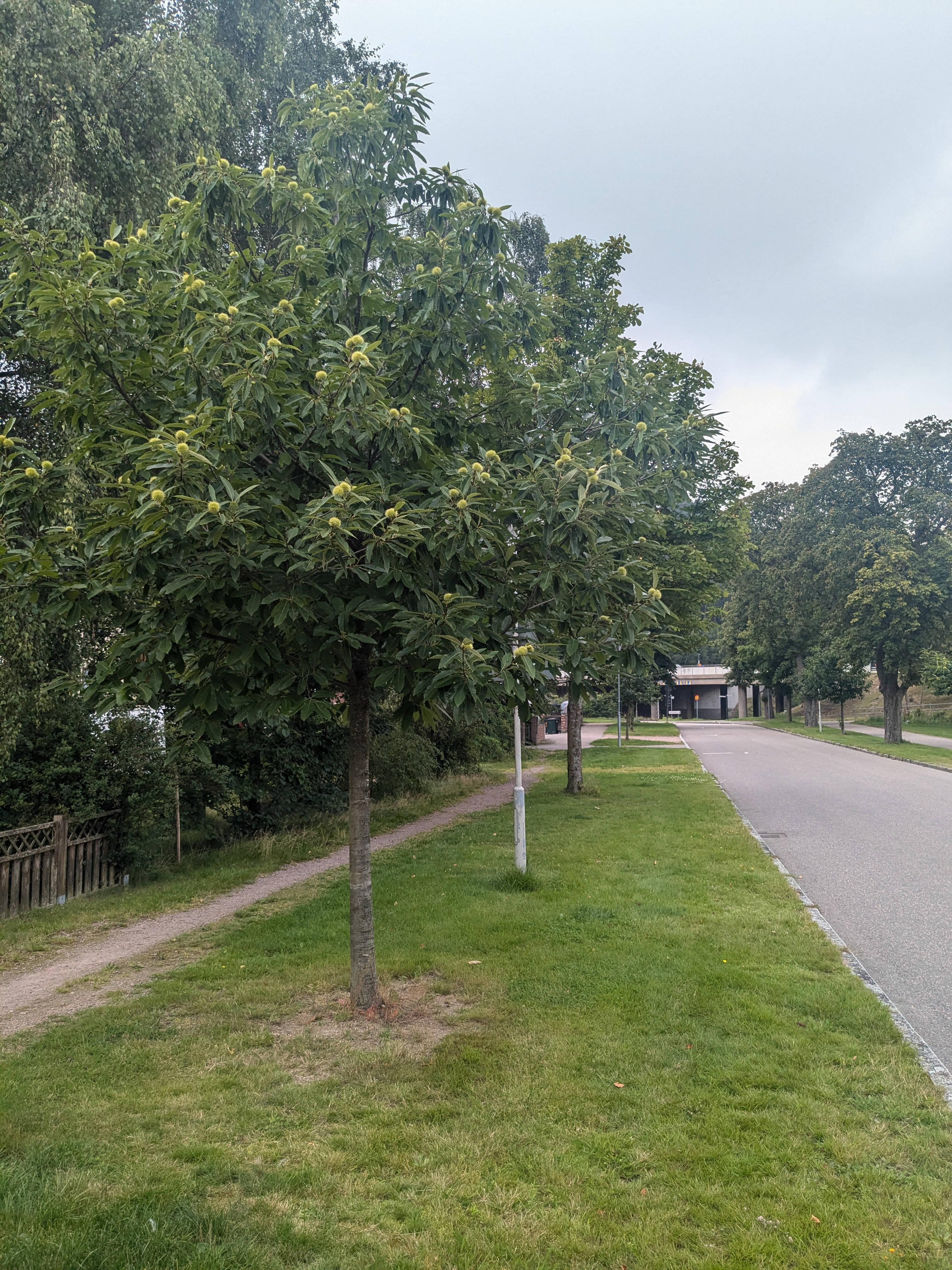 "Chestnut road" in nearby town Halmstad. Dying horse chestnut trees are replaced with sweet chestnut trees.
"Chestnut road" in nearby town Halmstad. Dying horse chestnut trees are replaced with sweet chestnut trees.
 Trees are mysterious. One chestnut tree died. The roots died, and the graft tried to form new roots, but failed.
Trees are mysterious. One chestnut tree died. The roots died, and the graft tried to form new roots, but failed.
Walnuts
The walnut trees that we grafted in May are looking good. About half of the grafts took, a bit dependent on the quality of the graft wood, I think. We had only fifty rootstock to graft on, but coming spring we will have a couple of hundred small trees.
 One of the walnut trees that was grafted this spring.
One of the walnut trees that was grafted this spring.
We also seeded quite a lot of Japanese Walnuts - Juglans ailantifolia - to use as rootstock for Heart-nuts. They look and taste great and are very cold-hardy. The total nut yield mass is lower than for ordinary walnuts, but for home garden use, they are fantastic. The leaves are beautiful and the trees grow vigorously and wide, perfect parasol-trees for a larger garden.
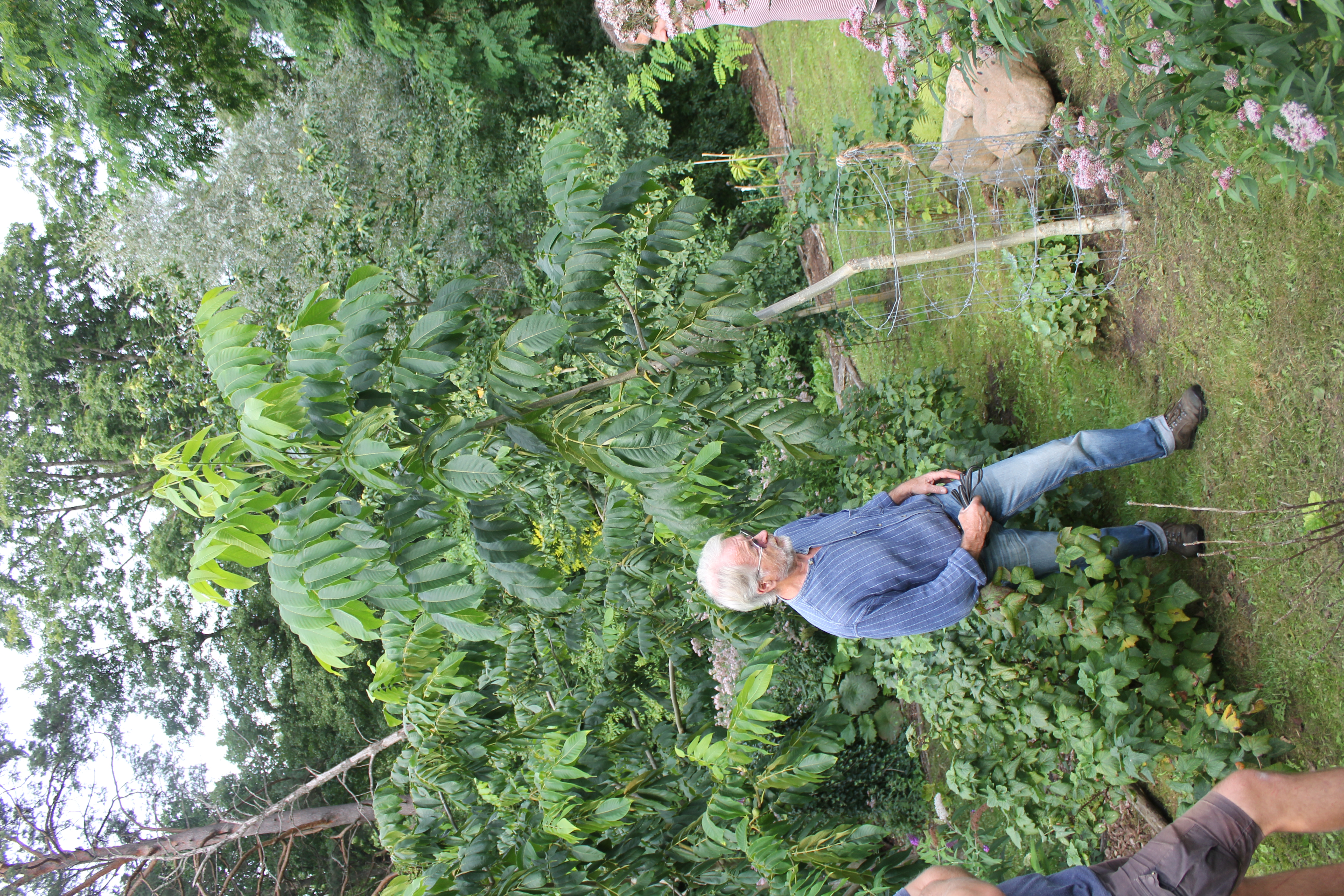 Heart-nut tree in Marc's garden grows 2 meters this year. Amazing trees.
Heart-nut tree in Marc's garden grows 2 meters this year. Amazing trees.
Hazelnut bushes
We are eagerly waiting for the stump-layered bushes to make roots in the sand that was added in Midsummer time. In the sand, we hope that the branches will make many new roots, but we will only know when we remove the sand in December. After that, the small trees will have a year or two of strengthening up before being ready to sell and plant out.
We have seen a new disease in hazel nuts this year, at Janet's place.
 The nut changes colour to chocolate, the rots off. What is this?
The nut changes colour to chocolate, the rots off. What is this?
Nut tree park
Peter guided the nut growers from Holma through the arboretum in Alnarp, near Malmö. Nut trees grow there for more than one hundred years and some have reached considerable size and harvest volume.
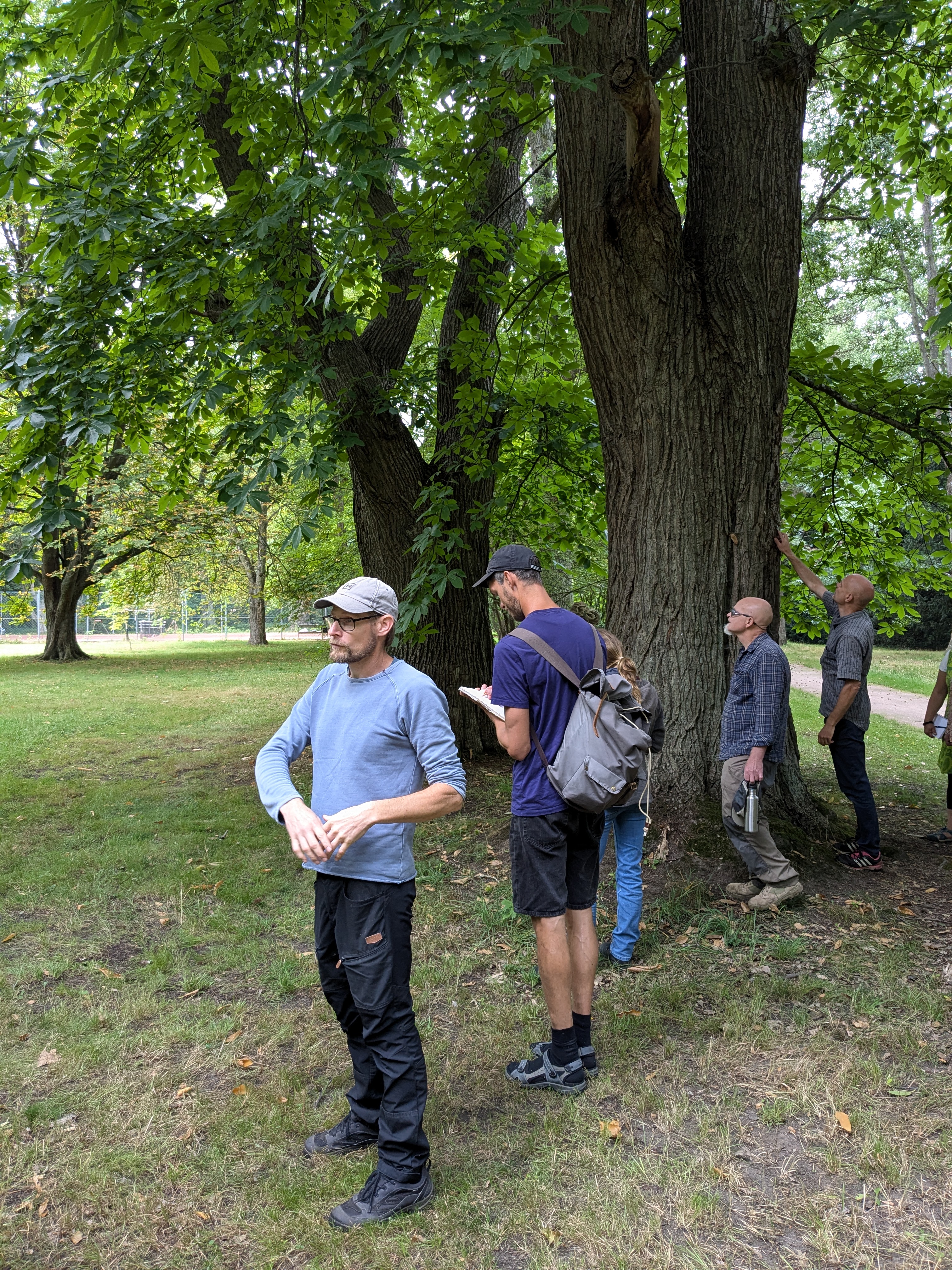 A cluster of sweet chestnut trees (with small nuts) grow well here.
A cluster of sweet chestnut trees (with small nuts) grow well here.
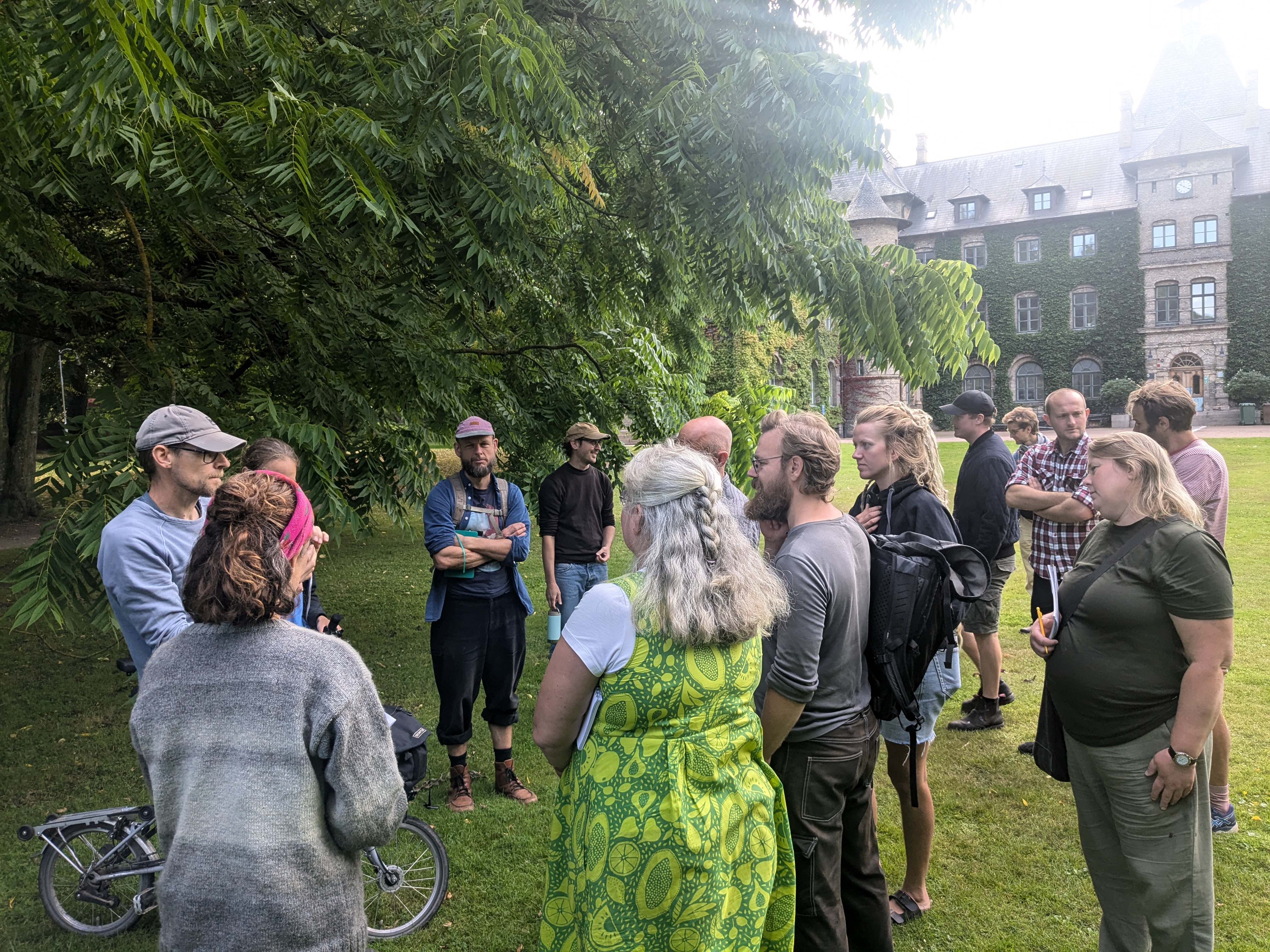 The Japanese walnut trees. Beautiful trees.
The Japanese walnut trees. Beautiful trees.
Swedish nut growing
This year, our friend Håkan in Vollsjö, has officially re-opened the Swedish commercial market for locally grown nuts. His hazelnut plantation started to yield this year and he could deliver to a few top-notch restaurants who were enthousiastic about the freshness and quality.
Swedish commercial nut growing has been gone for fifty years, and is now making a comeback. This is exciting and promising. There are now tools and techniques that reduce labour and make it economical to grow and sell nuts, despite the current EU subsidy system that promotes high-volume, large-scale operations.
It is great to be part of this movement.
Veggies
We have a good harvest season. Plenty of tomatoes and potatoes. Some great pumpkins. Quite a lot of chard. Crispy carrots. Some disappointments as well, with record amounts of snails eating leek, dahlia and onion.
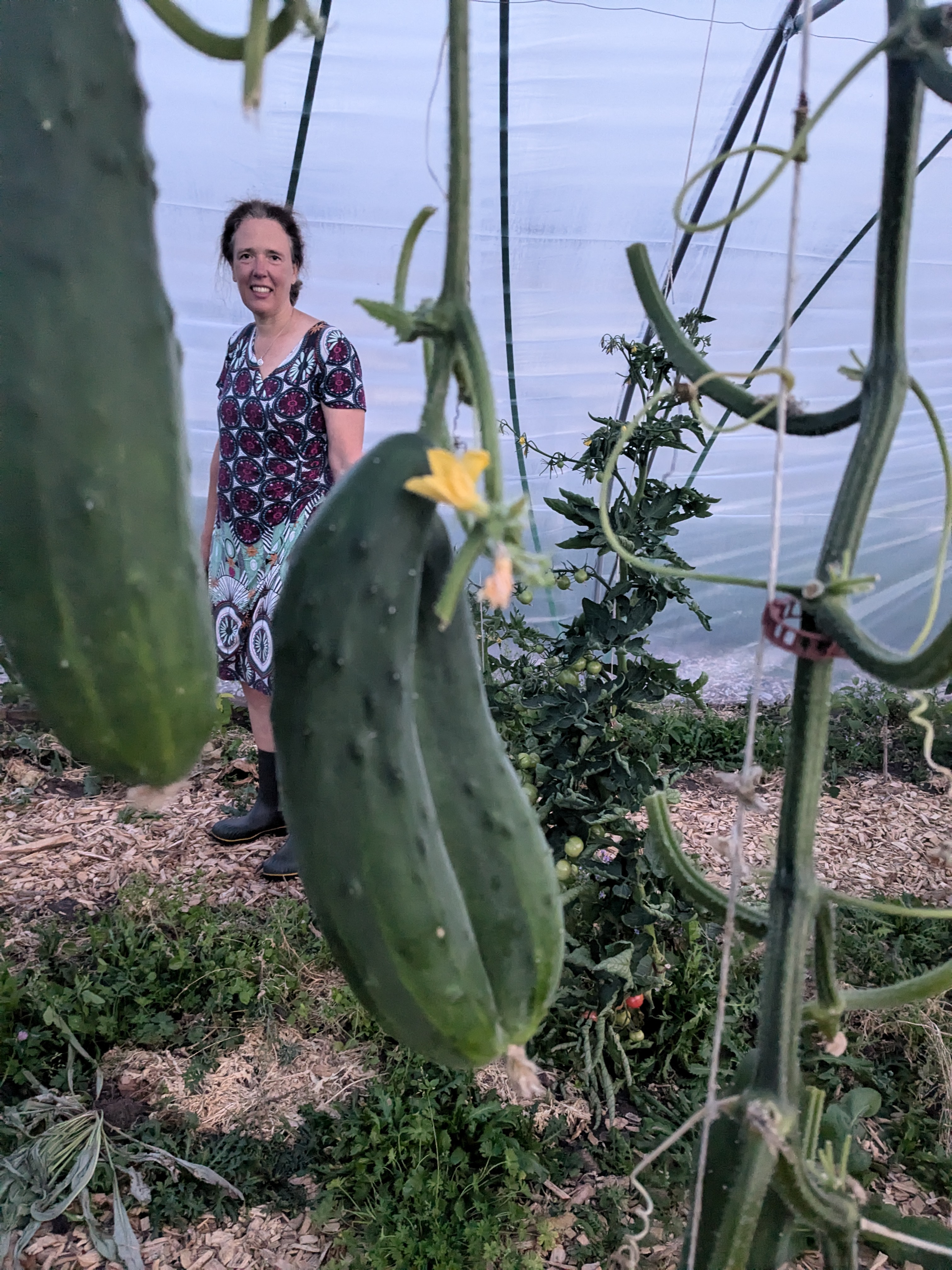 M spotted a twin cucumber.
M spotted a twin cucumber.
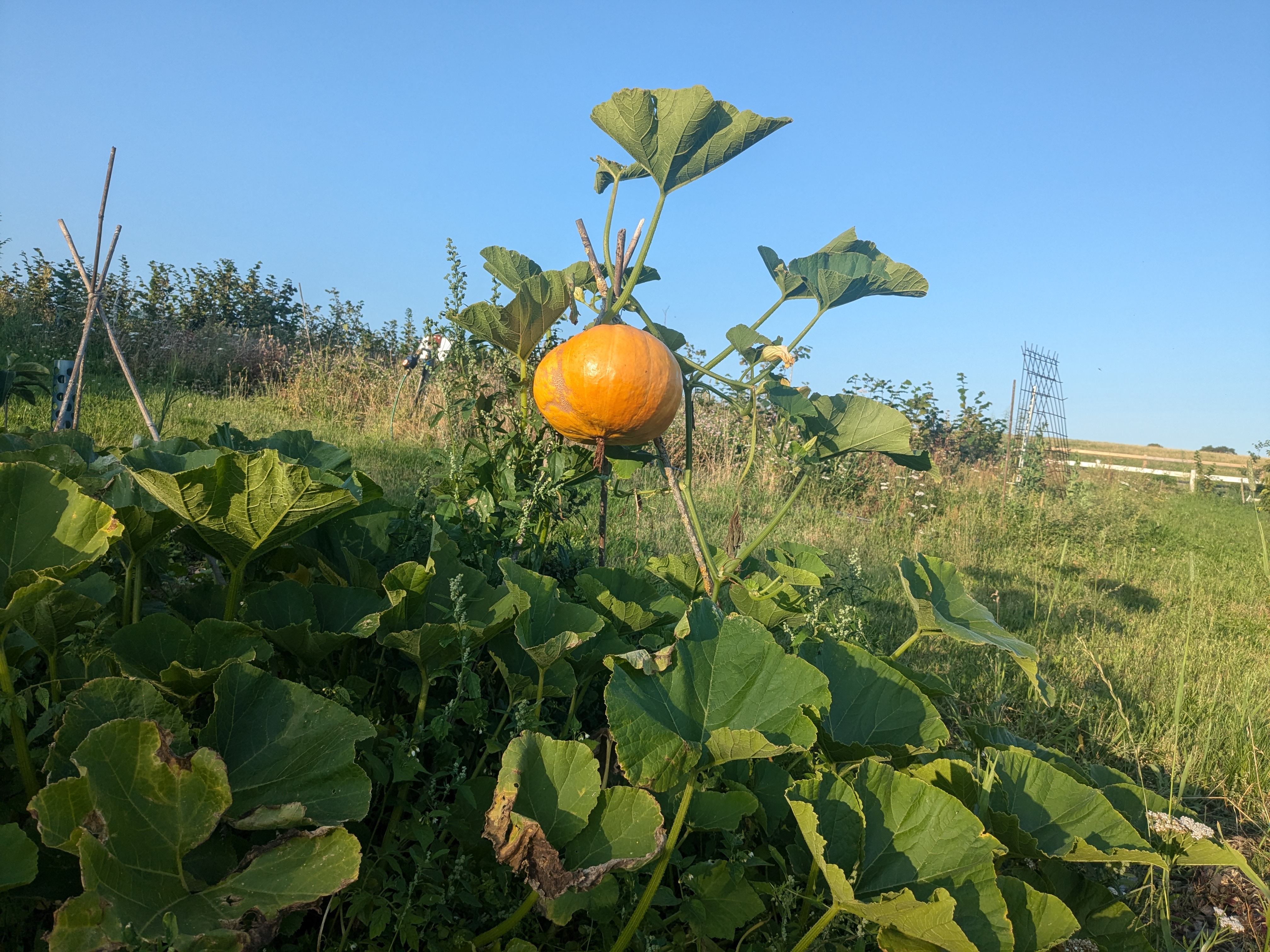 A pumpkin shines light on the rest of the garden. Next year we will expand pumpkins in a different place.
A pumpkin shines light on the rest of the garden. Next year we will expand pumpkins in a different place.
Friends and fruit
On a short tour to the East coast, I visited Ann Marie, who grows an array of amazing fruit and nut trees. Her sweet chestnut tree is unique in that it is self-pollinating. She also has a series of red-fleshed apples, some sweeter than others.
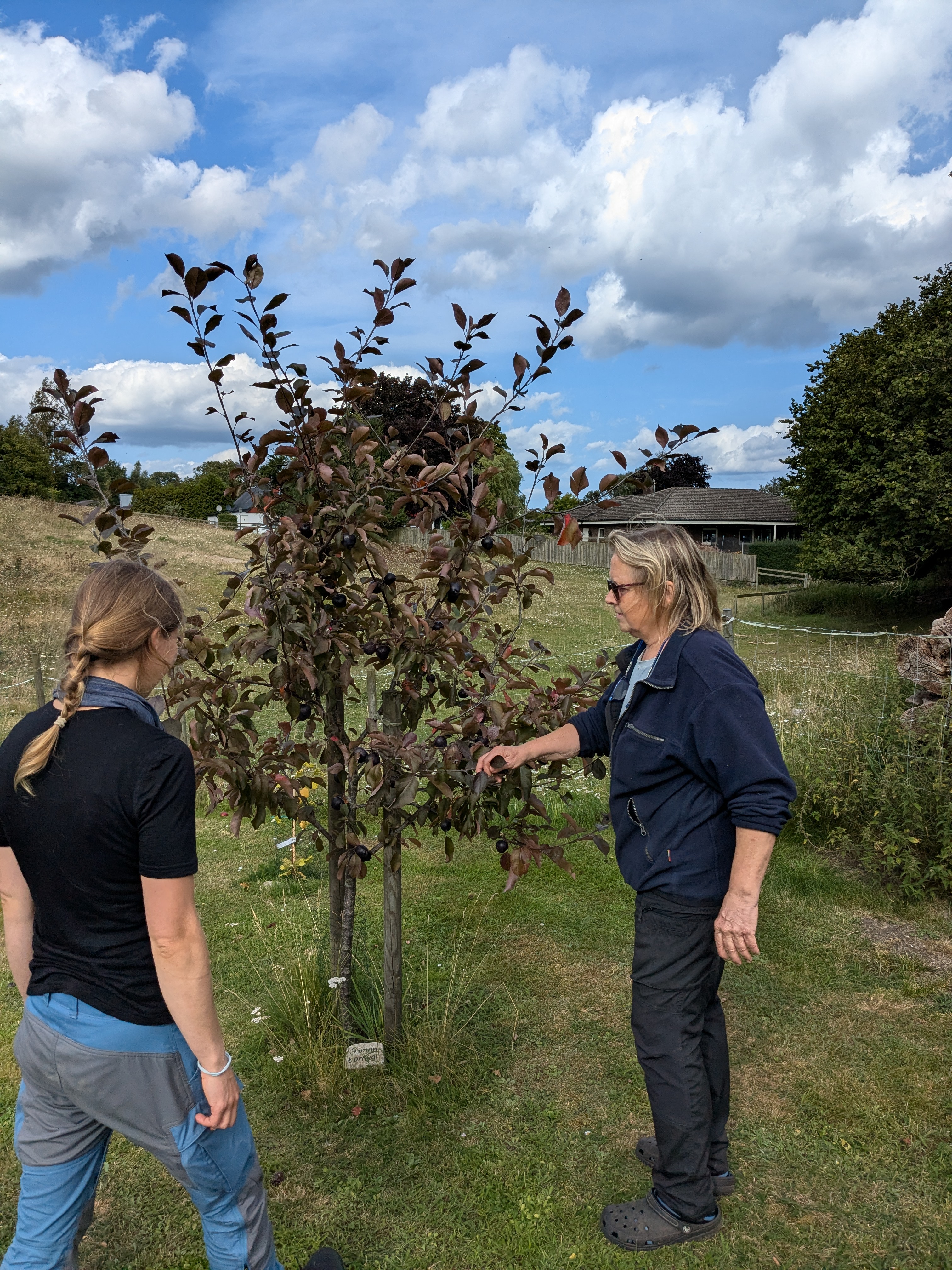 Dark red apple tree.
Dark red apple tree.
 The skin is almost black and the flesh is like beetroot.
The skin is almost black and the flesh is like beetroot.
We are so happy to meet old and new friends this summer. We had a visit by the Farmer and the Chef, Eva-Maria and Martijn.
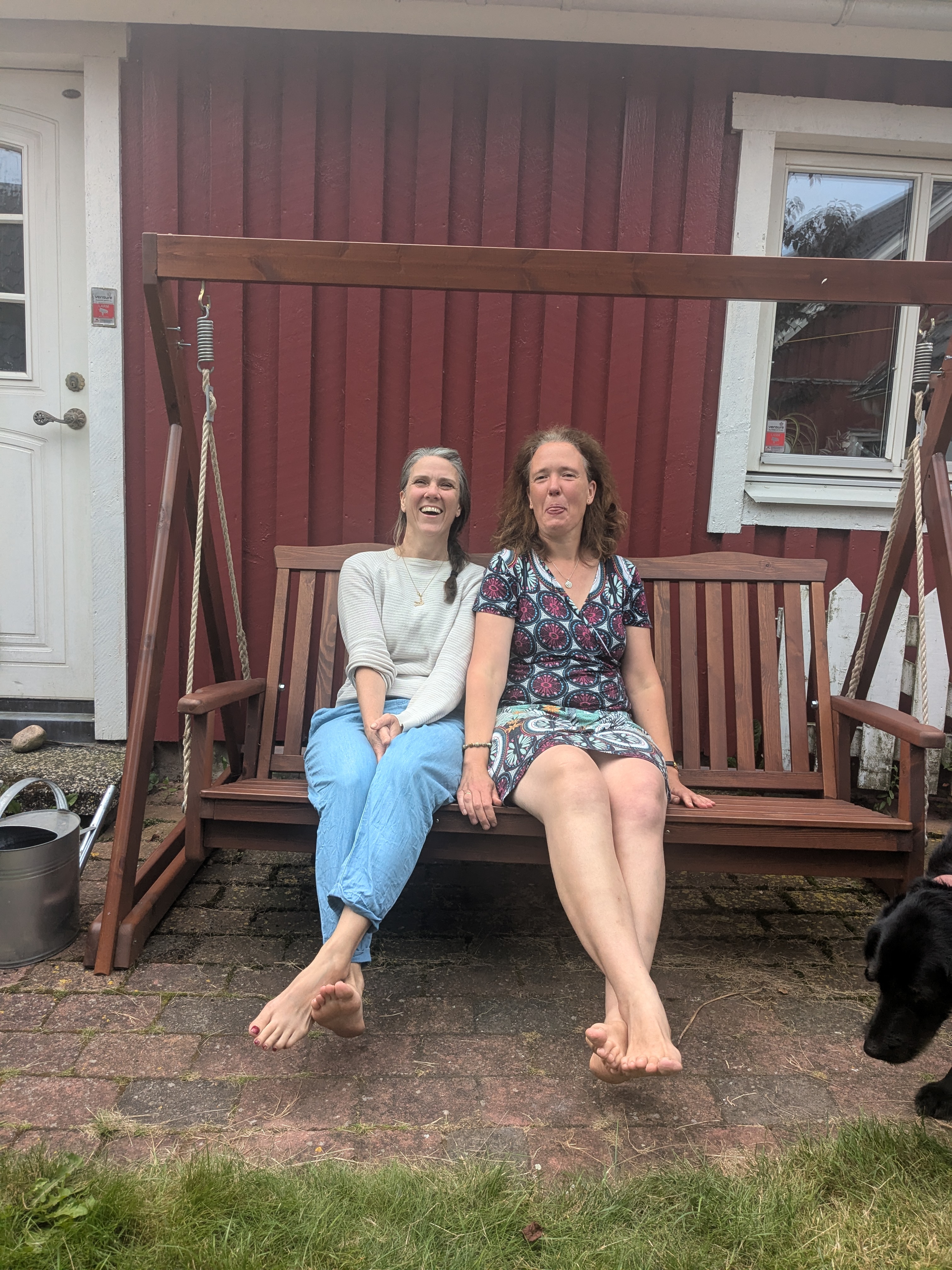 Eva Maria & M meeting up at our place
Eva Maria & M meeting up at our place
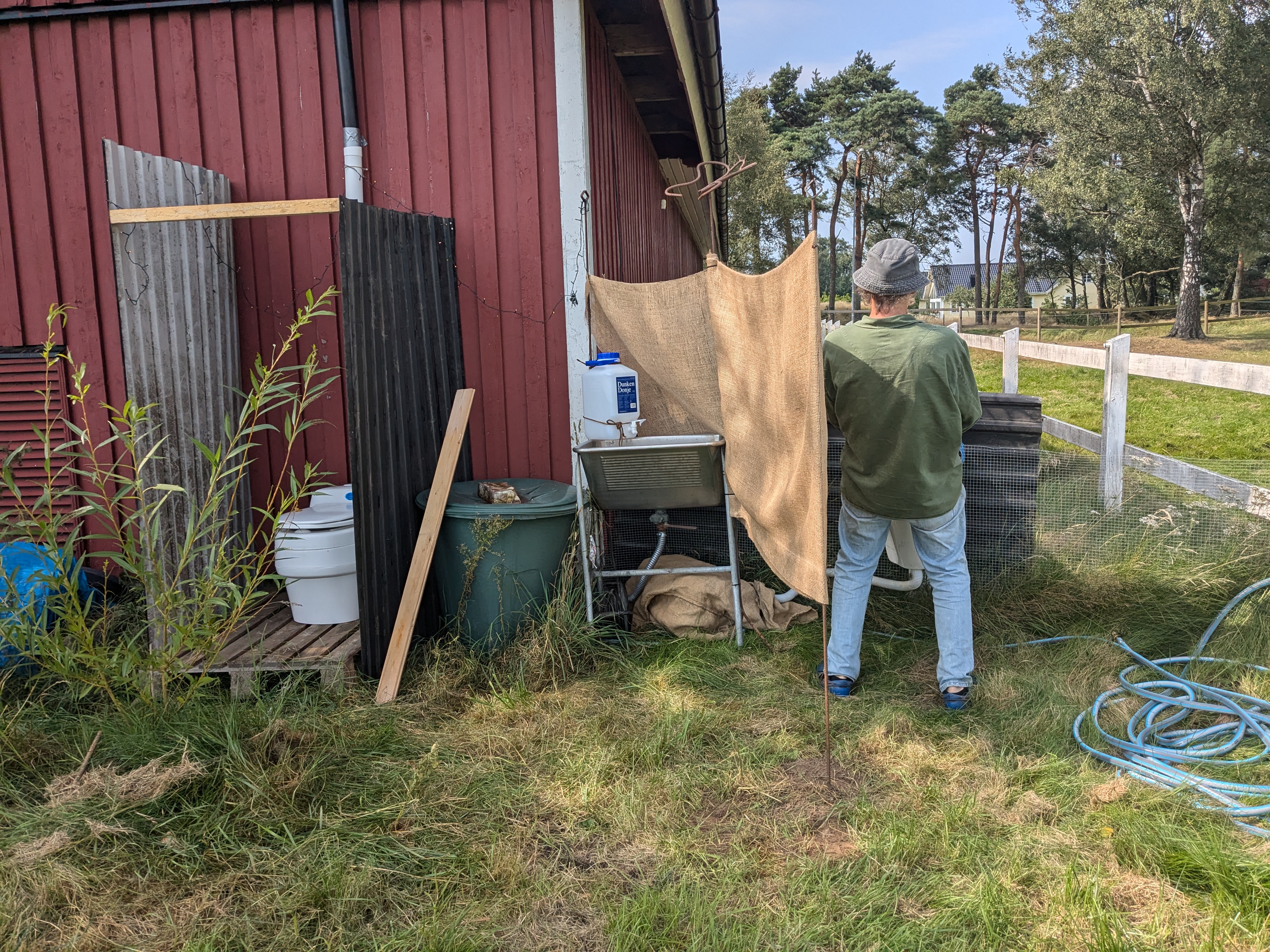 Our friend and carpenter Palle helps with our outdoor loo for the summer party.
Our friend and carpenter Palle helps with our outdoor loo for the summer party.
A new activist café
Now the café is open every week-end in Västralt. Stina is making amazing bread and Palle shares stories about a good life inside planetary boundaries. They lead by example in circular-nutrients, beautiful buildings and happy life. I imagine the concept of "RetroSuburbia" manifest in everything they do. They inspire dozens of visitors to live lighter.
 Activist café - Stina baking bread and making vegan cake. Hampus helps serving and cleaning.
Activist café - Stina baking bread and making vegan cake. Hampus helps serving and cleaning.
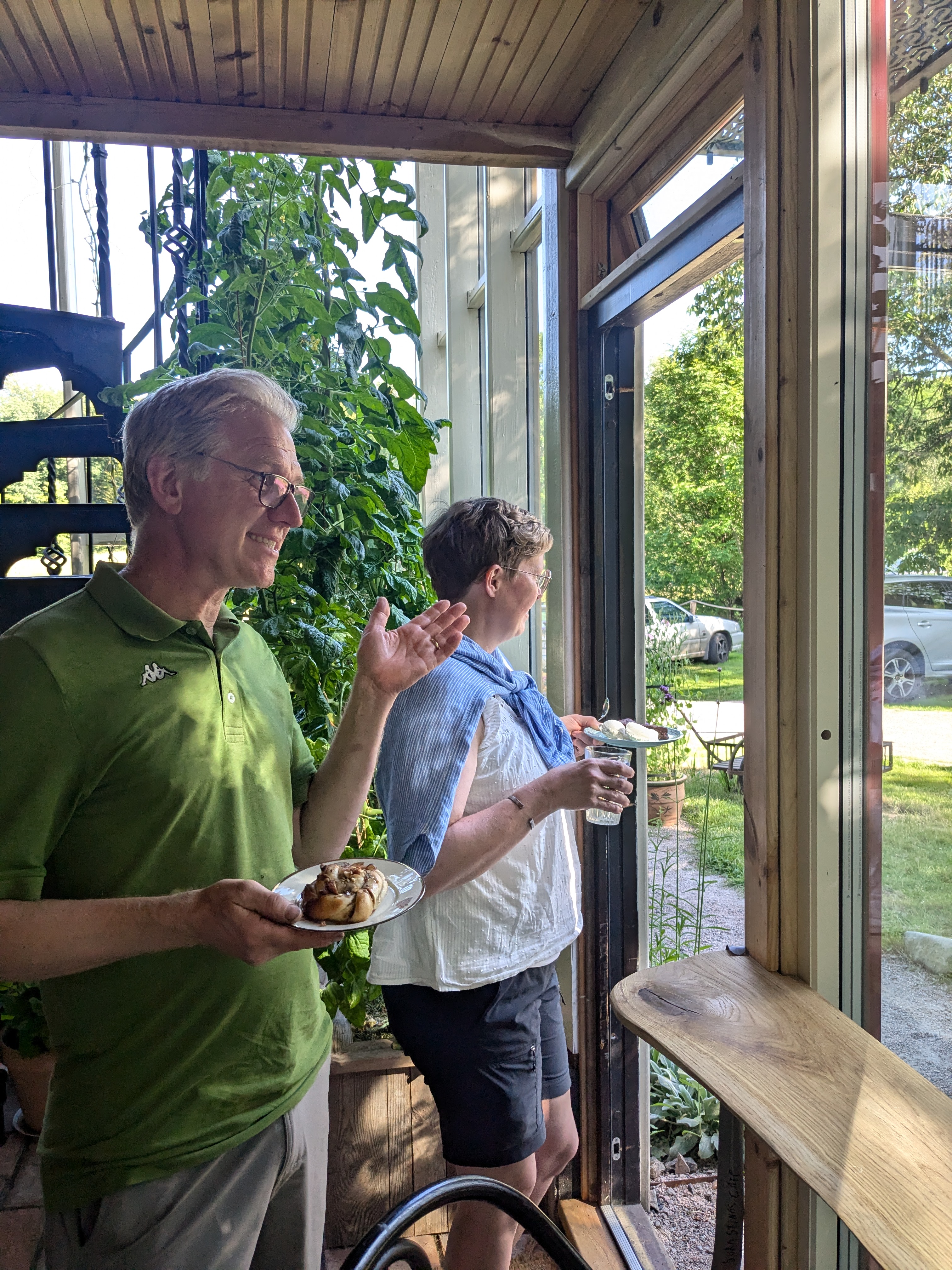 When we have friends over, we go there. This time with Signe.
When we have friends over, we go there. This time with Signe.
Apple sauce
August is the start of the apple sauce season. We have no apple trees to harvest, yet, so we go around looking for fruit. Both in public places and in gardens where we ring the bell and ask to take part of the bounty.
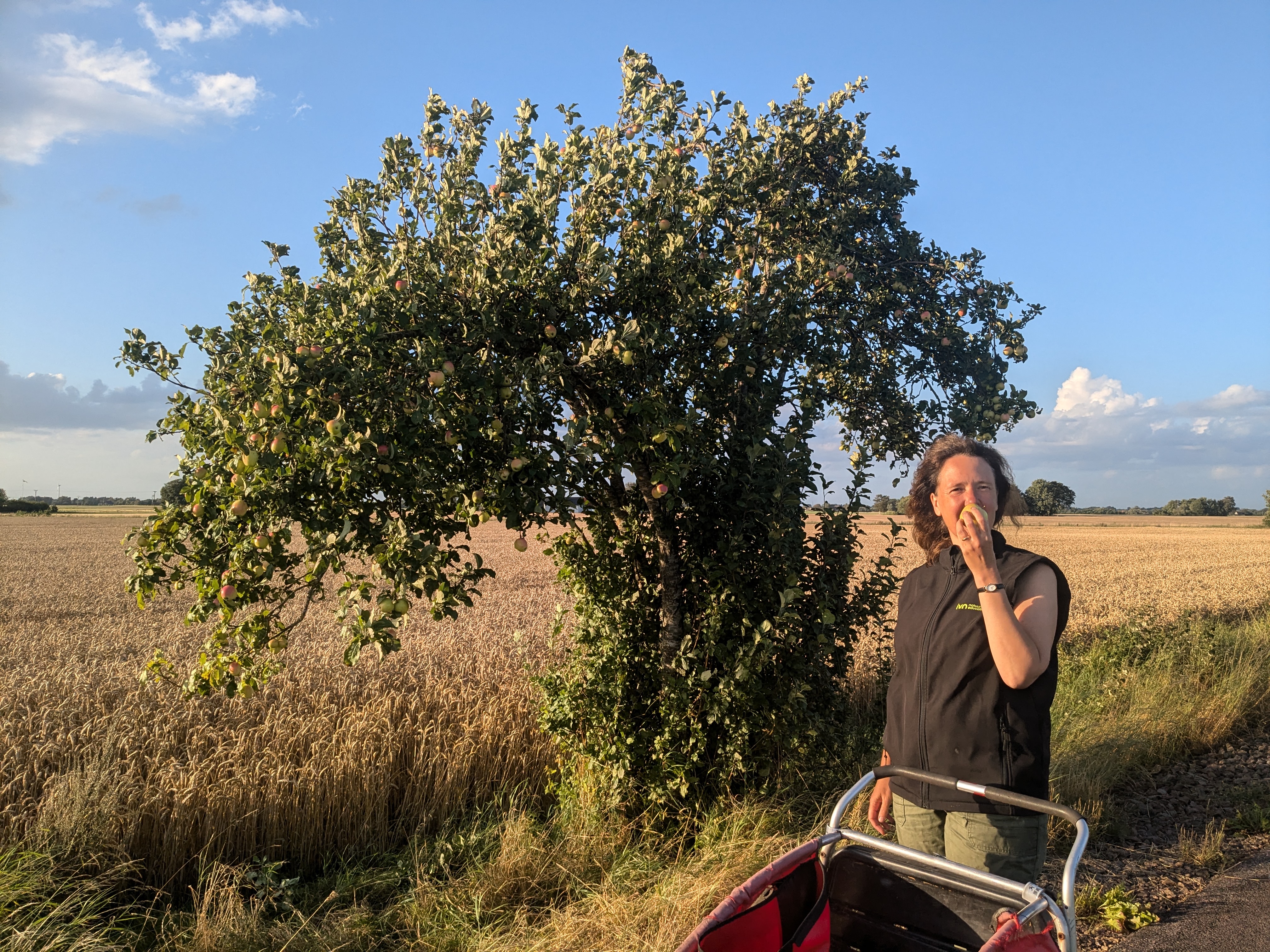 One of the trees along the bike road, the old train tracks.
One of the trees along the bike road, the old train tracks.
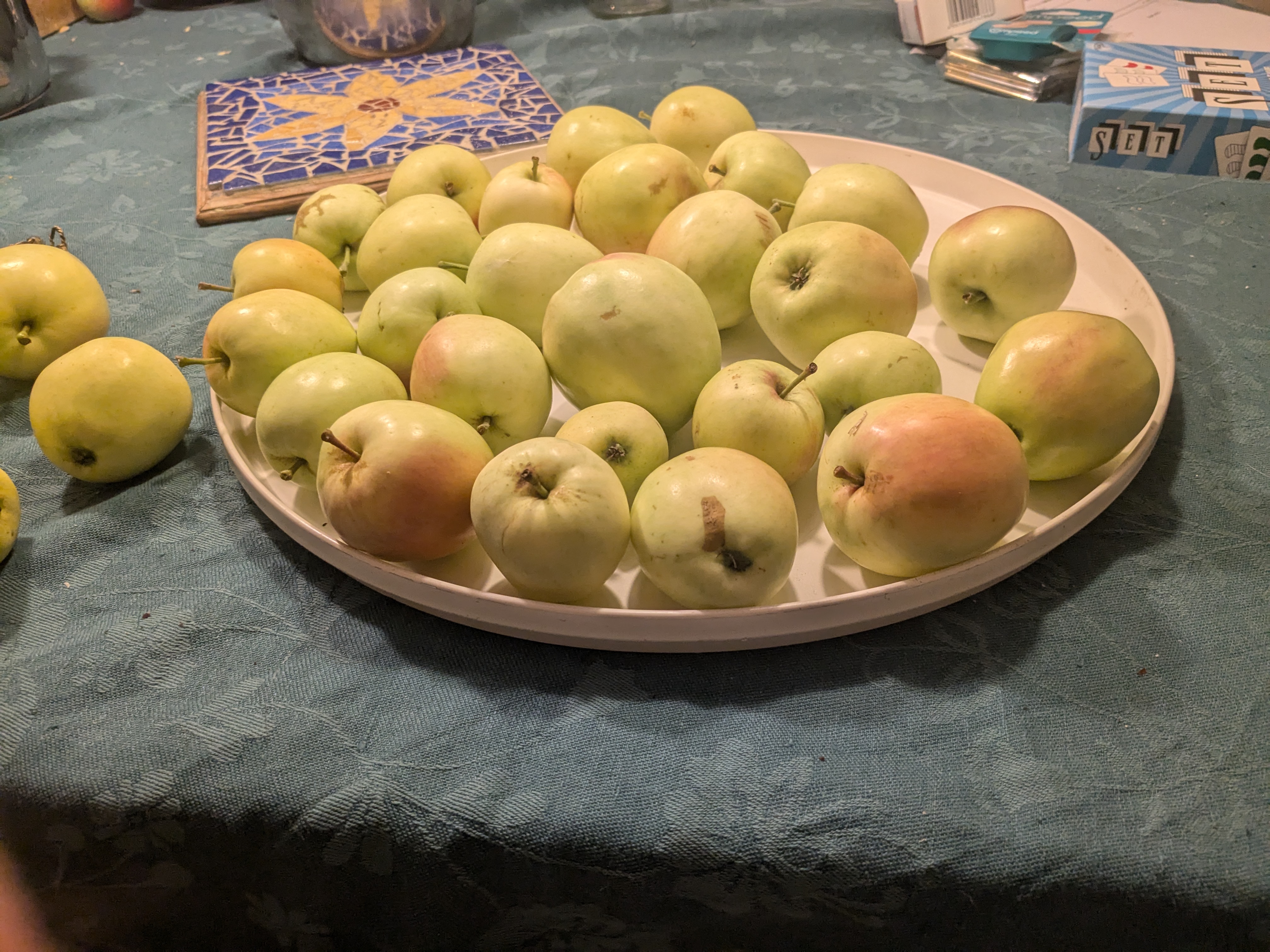 Summer apples - light and sweet.
Summer apples - light and sweet.
 M is cutting parts of the apples, and removes any rotten pieces.
M is cutting parts of the apples, and removes any rotten pieces.
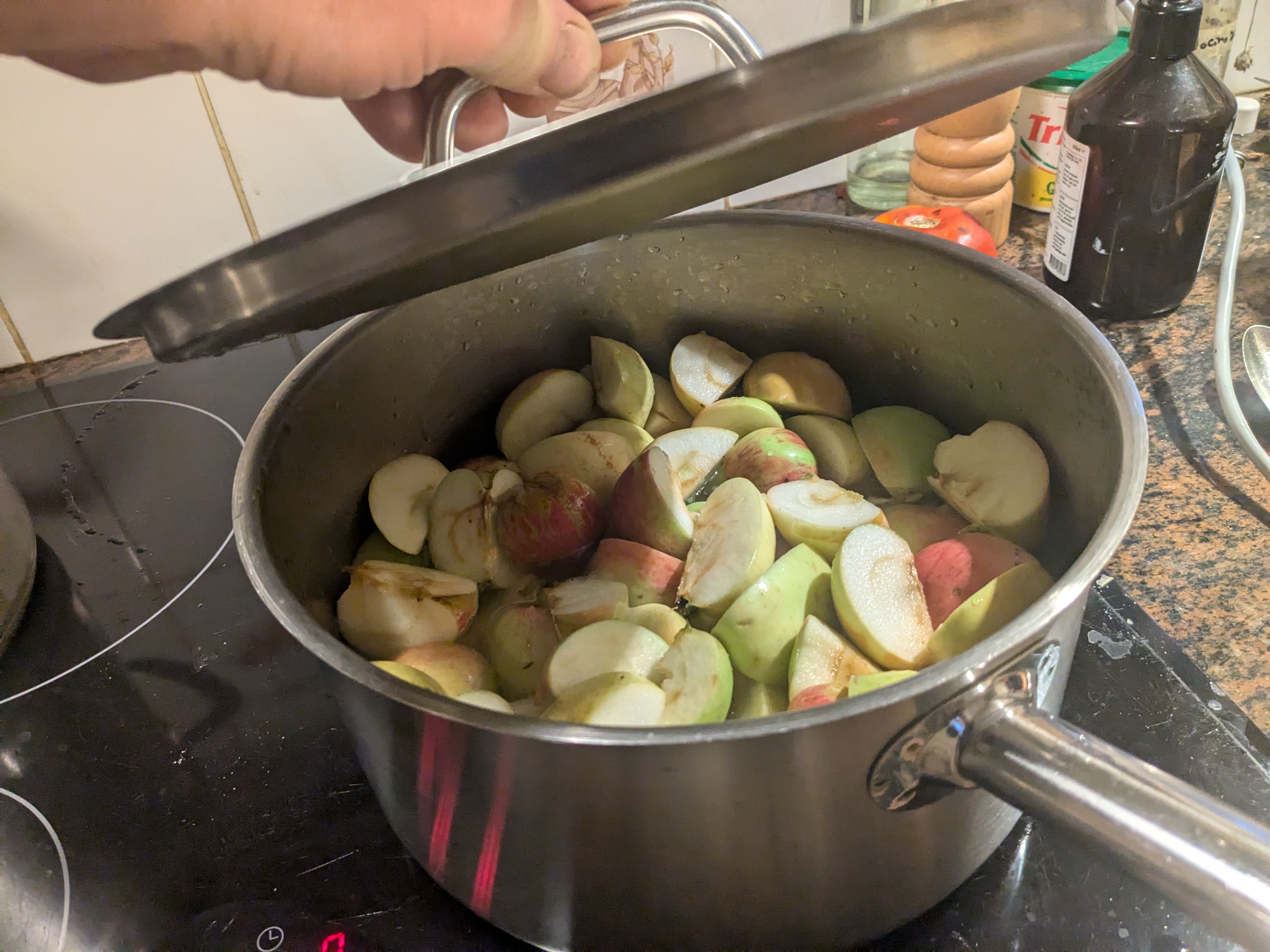 We boil the apples a couple of minutes until soft.
We boil the apples a couple of minutes until soft.
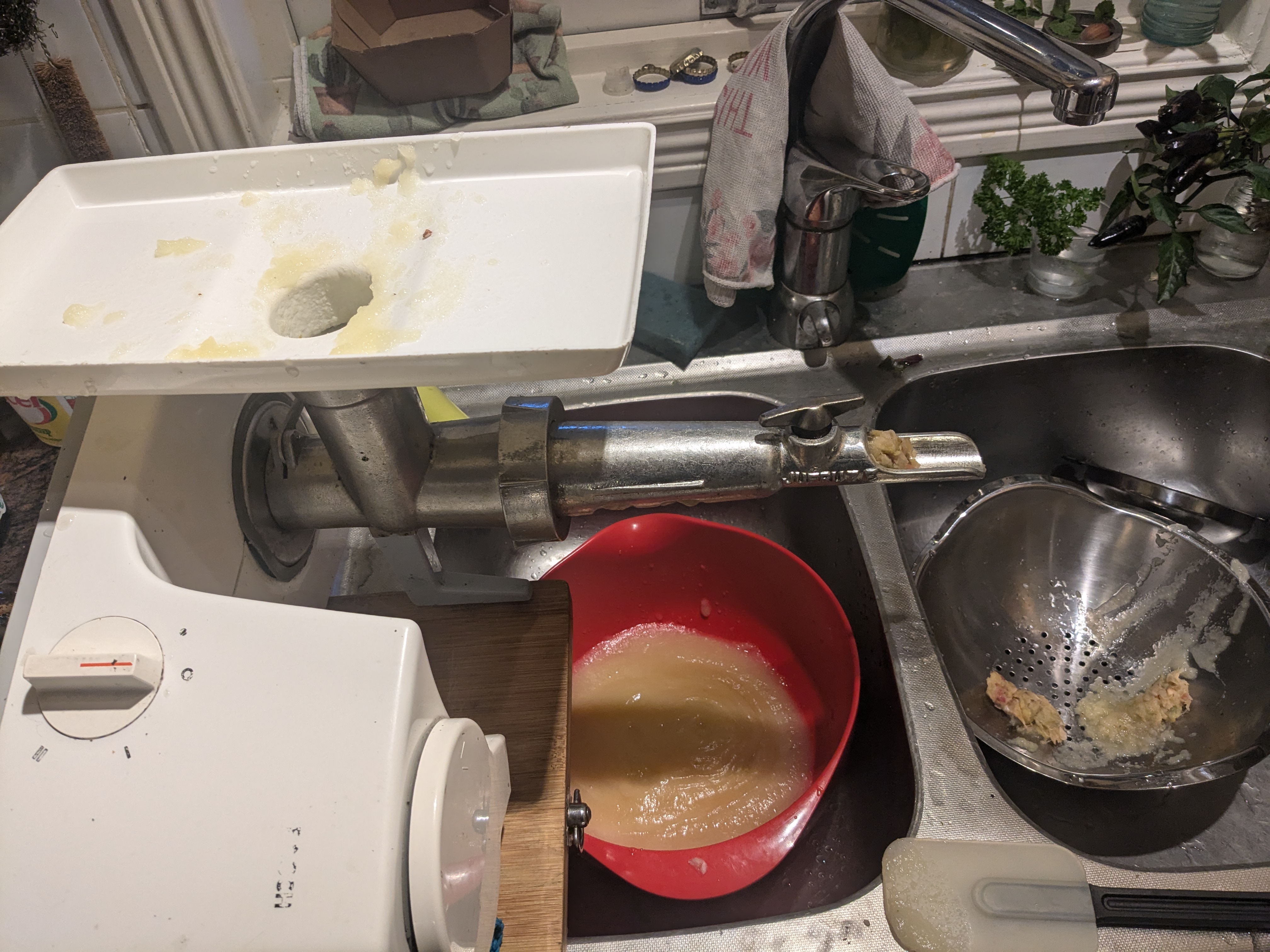 We use an old Bosch meat grinder with mashing unit to smash the apples and separate out seeds and skin.
We use an old Bosch meat grinder with mashing unit to smash the apples and separate out seeds and skin.
September will see more apple harvest. I hope we can fill our cool-storage room with plenty of apples!